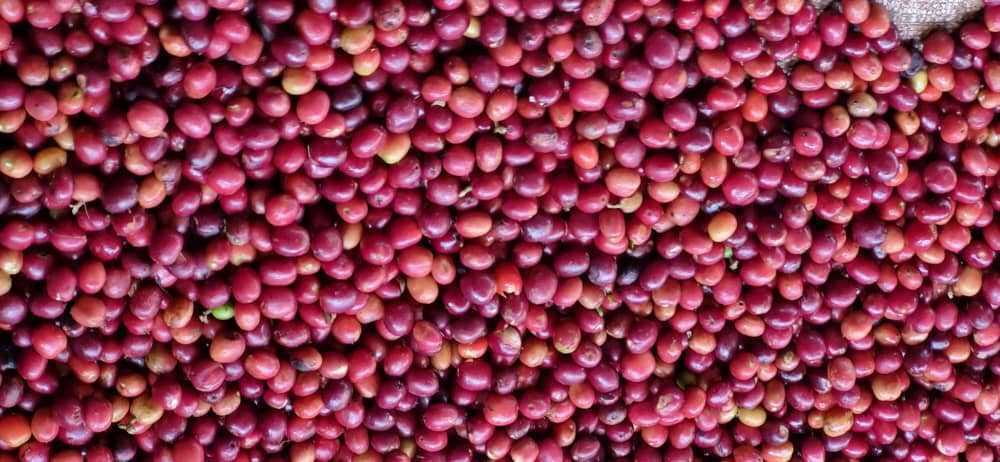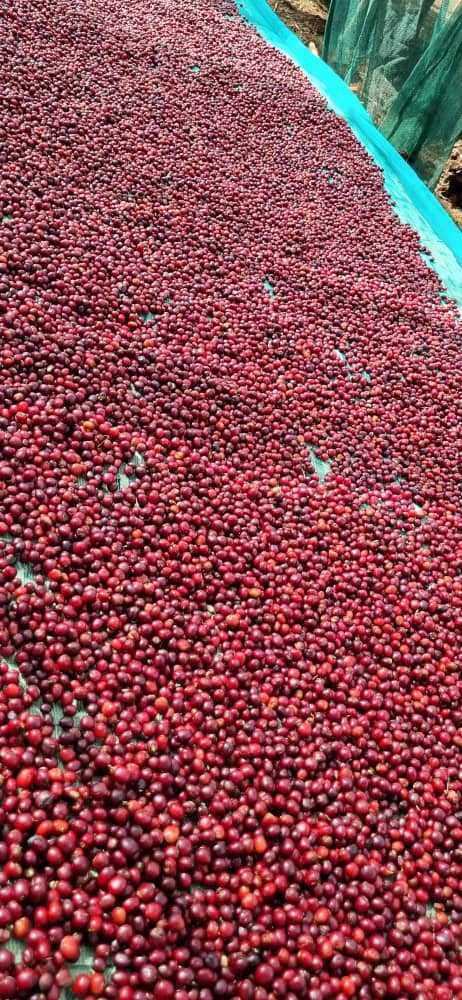This coffee was produced by smallholder producers in the Buku kebele, or village, and was processed at the Buku washing station owned by Esayas Bareso. The Buku Abel village, where the washing station is located within the Guji zone, sits 2350 meters above sea level, representing one of the highest coffee producing altitudes we’ve come across.
Local farmers grow locally selected varieties 74110, 74112, and 74158, which were developed by the Jimma Agricultural Research Center (JARC) in the 1970s. Cherries are manually harvested before being taken to the processing station where they are handsorted before being processed. The sorted, ripe cherries are then packed tightly in large plastic barrels, where an airlock system prevented any oxygen from entering. After 144 hours in barrels, the coffee in cherry was removed and laid out on 120 raised beds where it is then dried over the course of 2-3 weeks. All coffee is hand sorted a final time after drying before being prepared for export.
This coffee was sourced from SNAP Specialty Coffee. SNAP was established in 2008 by Negusse Debela in Ethiopia’s capital, Addis Ababa. The company operates three washing stations in the Gedeo zone, and are partnered with additional washing stations in Guji and West Arsi. We began our partnership with SNAP in 2022.
As the coffee industry continues to grow in Ethiopia, the country’s historic growing areas don’t always match up with the current-day maps defining Ethiopia’s geography. Our goal is to provide the clearest and most accurate information about the coffees that we offer, and we’re proud to provide the most specific location information we have for these coffees. Learn more about Ethiopia’s coffee growing regions on our blog.
Region: Oromia
Zone: Guji
Woreda: Hambela
Kebele: Buku Abel
ECX Growing Area: Sidama



